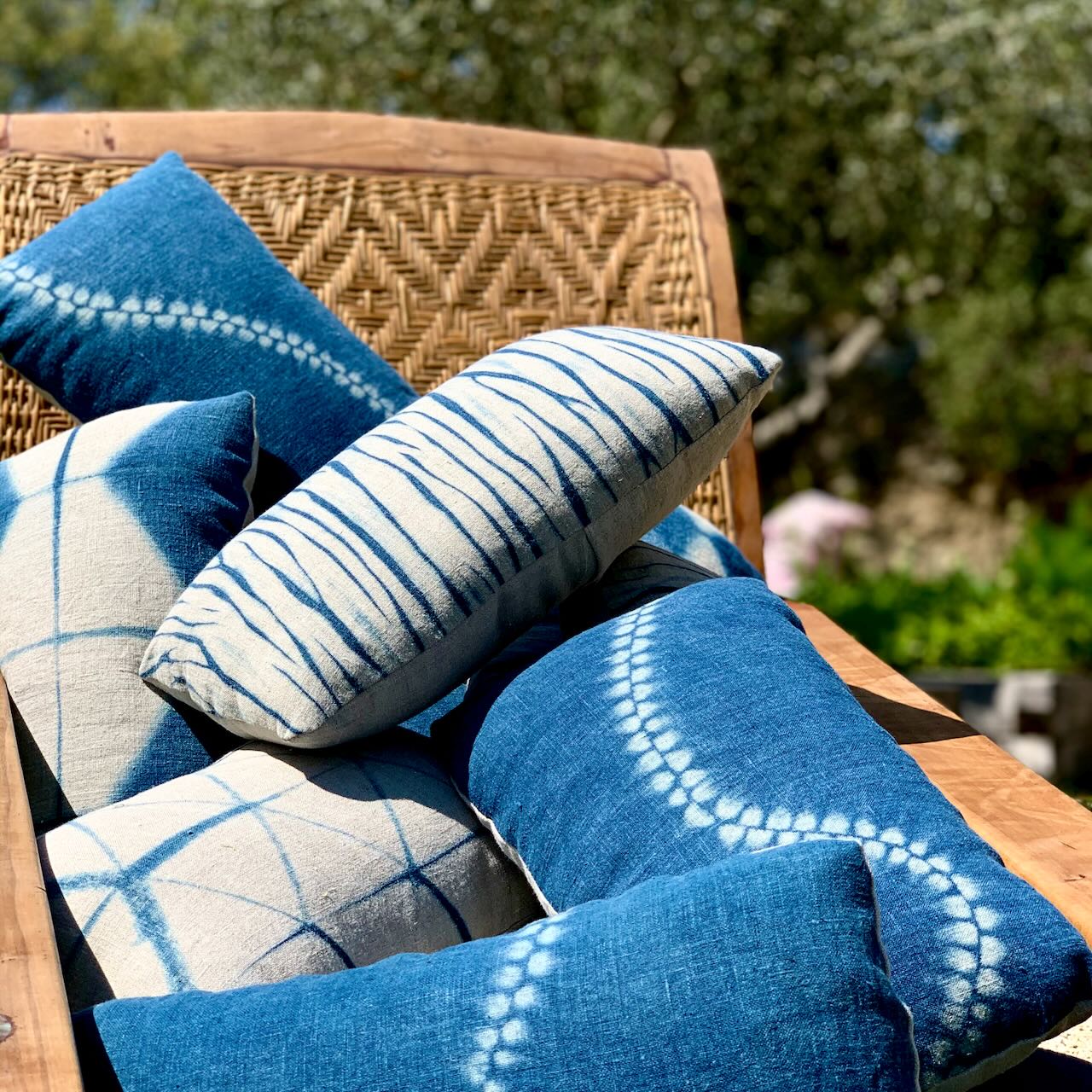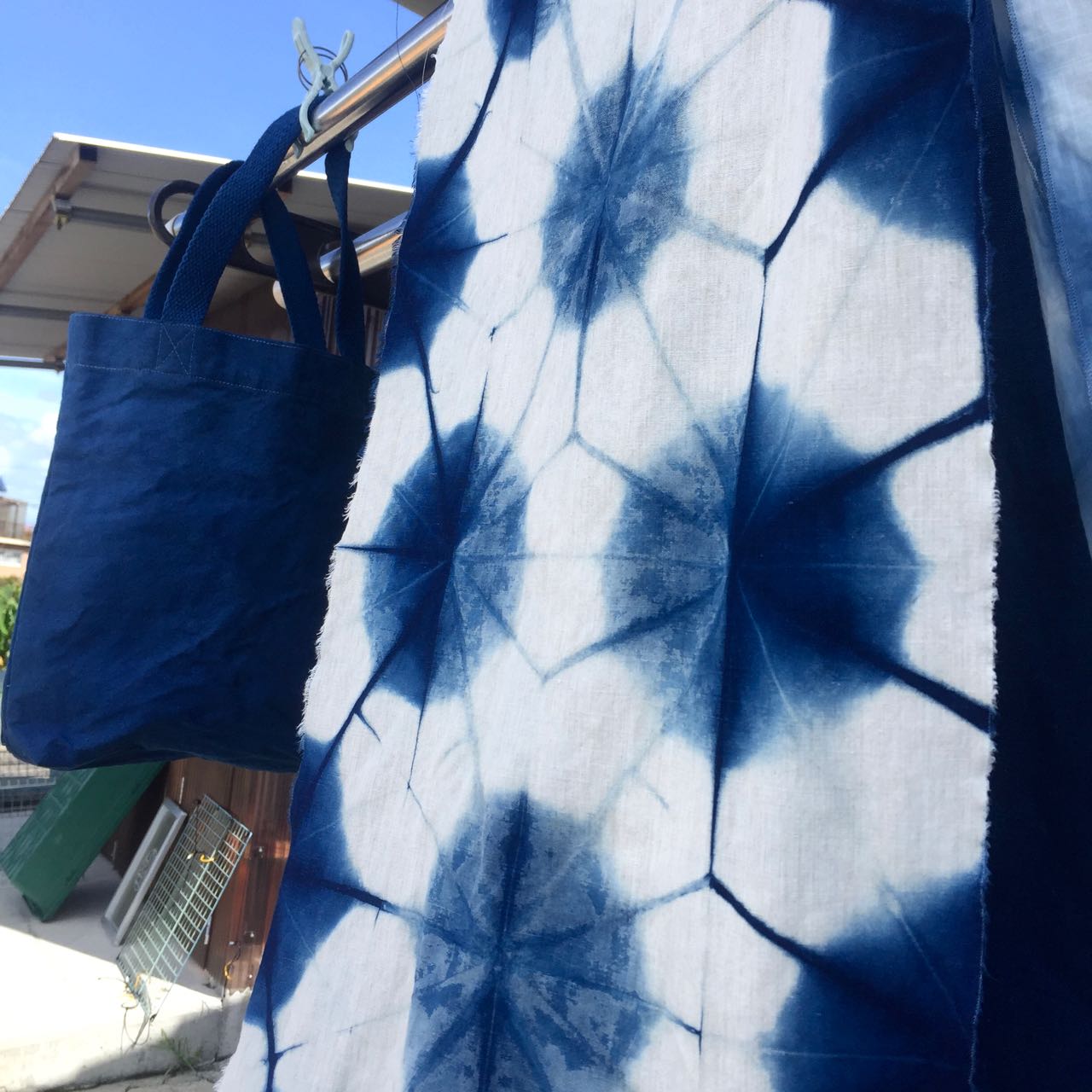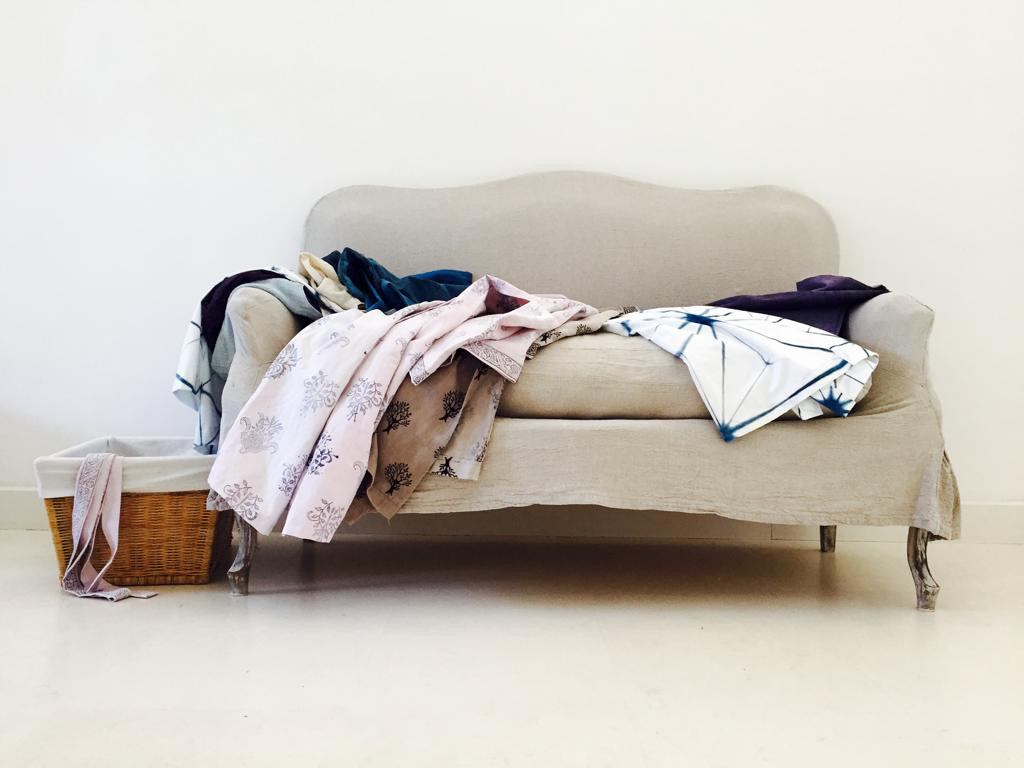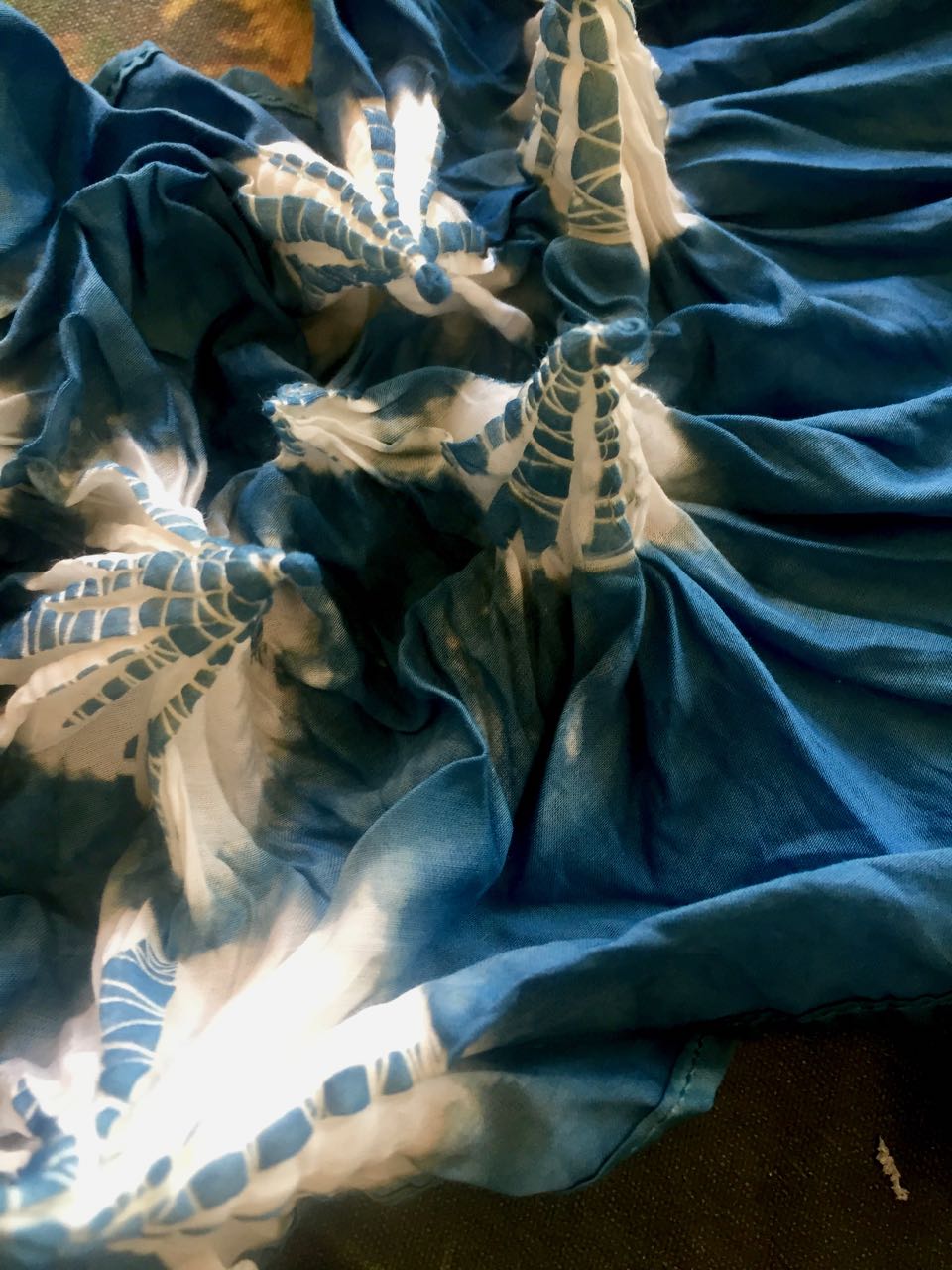In Septembre 2019, along with a group of fellow natural dyers conducted by Leaf organisation (now Tinctoria), we had the incredible chance to attend a 10 day class at Buaisou where along with putting together a Sukumo based indigo vat, we also practised several...
indigo
Buaisou: advanced indigo dying and reserve techniques course
A 10 day training organised by @leafluberon in Tokushima, Japan, at the @Buaisou-i workshop. An eagerly anticipated trip which went way ahead of my expectations. Filled with people passionate about indigo, natural dying practices, sustainability, life and slow...
Photoshooting Mei Line’s first collection: 2018
It was really exciting to shoot my first creations. The robes were from the start, a staple of my collections. All photos are linked to their respective product or category
Arimatsu Shibori, from tradition to innovation
Was very lucky to attend a workshop with Kuno Hiroaki organised by Couleur Garance. His enthusiasm about traditional indigo shibori and the way he envisions it's transposition into a XXIe century sustainable and modern production is very inspiring. We trained in...
Couleur Garance
Some pictures of a week long course in vegetal fabric dying at the prestigious Couleur Garance school, see website here And back home, at the studio:





